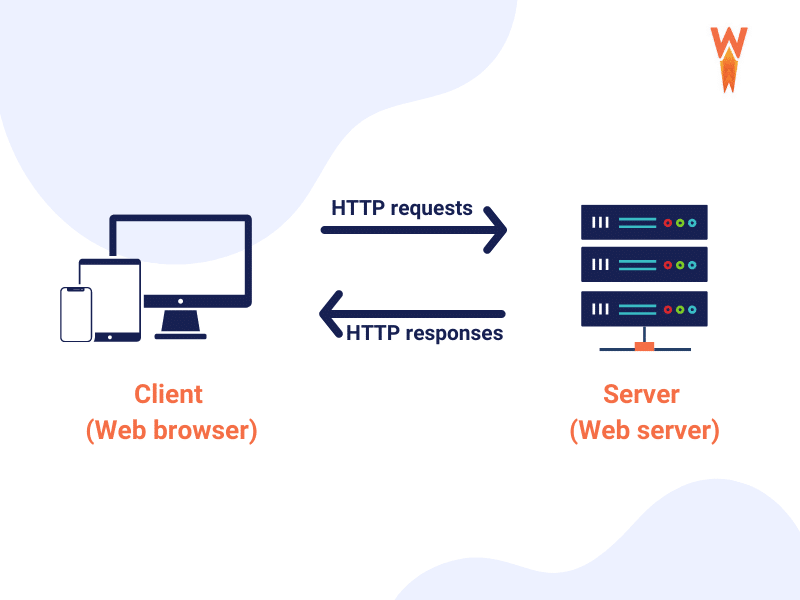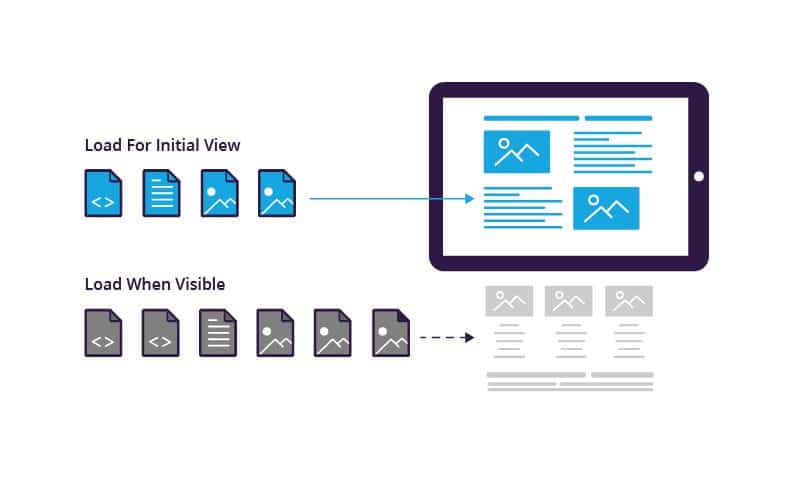Introduction
With increasing competition and evolving user demands, a web application's performance has become a critical factor in determining its success. A slow or poorly optimized application can lead to high bounce rates, low user engagement, and lost revenue opportunities. On the other hand, a fast and reliable application can enhance user satisfaction, improve search engine rankings, and drive higher conversions.
In today’s fast-paced digital world, users expect websites and applications to load quickly, respond instantly, and function smoothly across all devices. So, this guide will help you learn everything about web application performance optimization.
What is web application performance?
Web application performance refers to how effectively a web application functions when accessed by users. It measures various aspects of the user experience, including speed, responsiveness, reliability, and the ability of the application to handle a given load. High-performance web applications provide seamless and fast interactions, ensuring a good user experience.
Web application performance helps boost user experience, improving satisfaction and retention. Also, SEO ranks are increased when you use web application performance metrics on your website. Websites experience better conversion rates and boosted sales. By applying better web application performance metrics, you can easily build trust and credibility on the web.
Key Metrics to Measure Web Application Performance
- Measuring web application performance involves monitoring specific metrics that provide insights into how the application performs under different conditions. These metrics are essential for diagnosing issues, optimizing user experience, and ensuring the application meets business goals:
- Load time is one of the key metrics to measure the web application performance. It helps in measuring the total time taken for a web application to load completely.
- Next is the uptime, which helps in measuring the percentage of time the application is operational and accessible.
- Error rate is another key metric that is used to measure web application performance. It measures the percentage of errors occurring on your website. Internal Server Errors can disrupt your WordPress site’s functionality. Discover How To Resolve Internal Server Error WordPress to keep your website running smoothly
- Also, bounce rates are said to be another key metric to measure web application performance. Here, the number of visitors leaving your site on the first page is measured.
- Latency is said to be a vital key metric one must measure for web application performance. It measures the delay in transmitting data between the client and the server.
- Then, the first contentful paint (FCP) is measured to see the time it takes to render the first piece of content on the webpage.
- Next, the Largest Contentful Paint is measured, which tells you the time it takes to render the most important element on the page.
- Then there comes the number of HTTP requests metric, where the total number of requests is measured by the browser.
- When you focus on all the above metrics, it can help you maintain a reliable, user-friendly, and better-performing web application.
Best Website Optimization Techniques One Must Utilize
Since you know well about web application performance and the vital metrics to measure, it is now time to learn about the best website optimization techniques:
Optimize Page Load Speed

Optimizing page load speed is essential for enhancing web application performance, as it directly impacts user experience, engagement, and conversion rates. Reduce the size of CSS, JavaScript, and HTML files using tools like UglifyJS or Gzip compression. Our Gutenberg WordPress Theme ensures lightning-fast loading for startups aiming to succeed.
Use a Content Delivery Network

Using a Content Delivery Network (CDN) is one of the most effective strategies for optimizing web application performance. A CDN enhances speed, reliability, and scalability by distributing content across multiple servers around the globe.
A CDN stores copies of your web application’s static assets (e.g., images, CSS, JavaScript) in data centers worldwide. When a user accesses your web application, the content is served from the server closest to their geographic location. This reduces latency and improves load times. A properly implemented CDN significantly reduces load times, enhances user experience, and improves web application performance metrics.
Implement Browser Caching
 Browser caching is a crucial technique for web application performance optimization. It allows the browser to store static resources (e.g., images, CSS, JavaScript) locally on the user's device, so they don’t need to be re-downloaded on subsequent visits. This reduces server load, decreases page load times, and improves user experience.
Browser caching is a crucial technique for web application performance optimization. It allows the browser to store static resources (e.g., images, CSS, JavaScript) locally on the user's device, so they don’t need to be re-downloaded on subsequent visits. This reduces server load, decreases page load times, and improves user experience.
When a user visits a web application, the browser downloads resources from the server. The server sets caching rules using HTTP headers, specifying how long resources can be stored on the user's device. For future visits, the browser retrieves these resources from its cache rather than downloading them again, significantly reducing load time.
Optimize Images

Optimizing images is one of the most effective ways to improve web application performance. Large, unoptimized images can significantly slow down page load times, leading to poor user experience and lower search engine rankings. By optimizing images, web applications can deliver faster, more responsive experiences while reducing server load, saving bandwidth, and improving overall performance.
Mobile Responsiveness

Mobile responsiveness is a critical factor in optimizing web application performance. As mobile traffic continues to grow, ensuring that your web application works seamlessly across different devices and screen sizes is essential for both user experience and performance. Want to track your website's performance and traffic trends? Don't miss our guide on How To Check A Website's Traffic for actionable tips
Optimizing for mobile ensures users on slower networks have a smooth experience. Mobile-first indexing is a key ranking factor for search engines. Responsive sites are more likely to rank higher on Google and other search engines. By ensuring your web application is fully responsive, you can provide a seamless experience for users on mobile devices, improve performance, and boost engagement.
Reduce Server Response Time

Reducing server response time is a key aspect of web application performance optimization. The server response time (or Time to First Byte (TTFB)) refers to the duration between a client’s request and the first byte of data received from the server. A slow server response can significantly degrade the overall user experience, especially when combined with high page load times.
Minimize HTTP Request

Minimizing HTTP requests is one of the most effective strategies for optimizing web application performance. Each HTTP request requires a round trip to the server, which consumes bandwidth and increases page load times. By reducing the number of requests made by the browser, you can improve the loading speed and overall user experience of your web application.
Use Lazy Loading

Lazy loading is a performance optimization technique that delays the loading of nonessential resources (like images, videos, or iframes) until they are needed. This can dramatically reduce initial load times, especially for content-heavy pages, and improve user experience, particularly on mobile or slow network connections.
Lazy loading helps optimize web application performance by deferring resource loading until the user interacts with or scrolls to those resources (e.g., when images or videos come into the viewport). It reduces the number of HTTP requests made during the initial page load and enhances the overall speed of the application.
Enable Accelerated Mobile Pages

AMP (Accelerated Mobile Pages) is an open-source initiative designed to improve the performance of web applications, particularly on mobile devices. By leveraging AMP, web pages can load almost instantly by adhering to strict standards that prioritize speed and efficiency.
Enabling AMP for web applications is an effective way to improve performance, especially for mobile users. By leveraging its lightweight design principles, optimized components, and Google’s AMP Cache, you can achieve faster load times, better user engagement, and improved search rankings.
PRO TIP: Starting a small business website doesn't have to be complicated. Follow our guide on 9 Proven Steps for Building a Small Business Website with WordPress to simplify the process.

Optimizing Core Web Vitals is critical for enhancing web application performance and providing a great user experience. Core Web Vitals are a set of standardized metrics defined by Google to measure real-world user experience, focusing on three key aspects: loading performance, interactivity, and visual stability. Optimizing these metrics not only improves user satisfaction but also boosts SEO and search rankings. Want to optimize your web application's performance while boosting its SEO rankings? Check out our comprehensive guide on What are the Best SEO Practices? to align your strategy with industry standards.
Conclusion
Web application performance optimization is crucial for ensuring a fast, reliable, and seamless user experience. With increasing user expectations and the competitive nature of the digital landscape, optimizing web application performance is no longer optional—it’s essential for success.
A high-performing web application delivers value to users by ensuring swift interactions, stable interfaces, and reliable functionality. Businesses that invest in performance optimization can differentiate themselves in a crowded market, enhance customer satisfaction, and achieve long-term growth. By combining strategic planning, regular audits, and modern optimization techniques, you can ensure your web application remains fast, efficient, and ready to meet the evolving needs of users.







Add your Comment